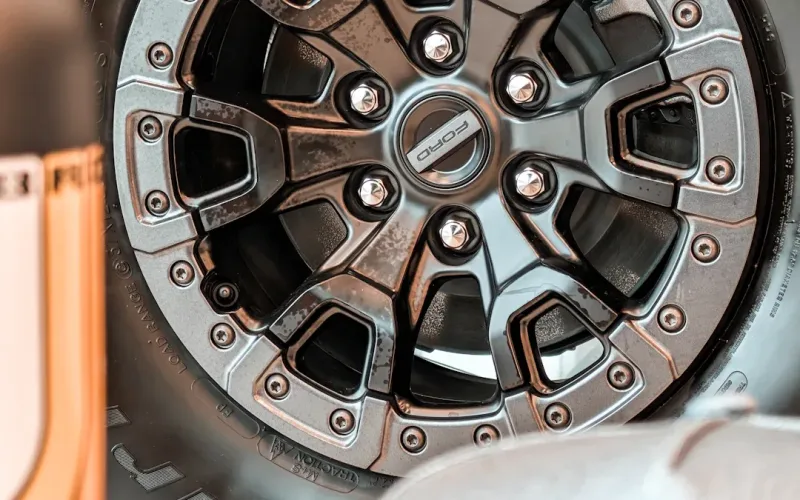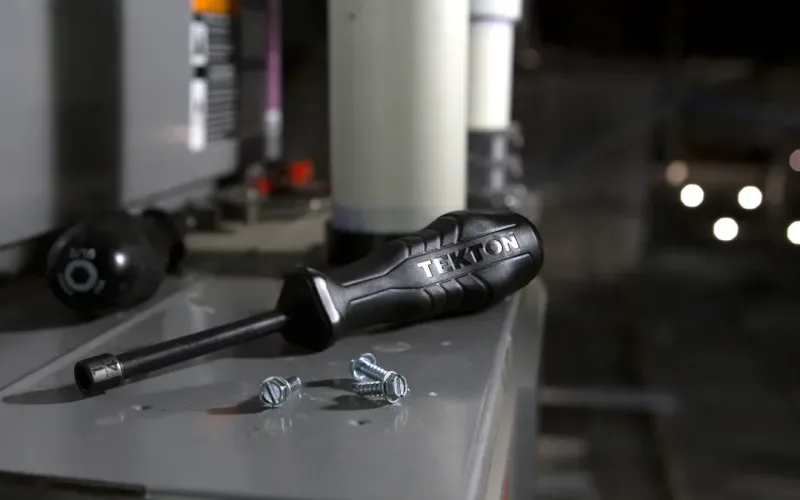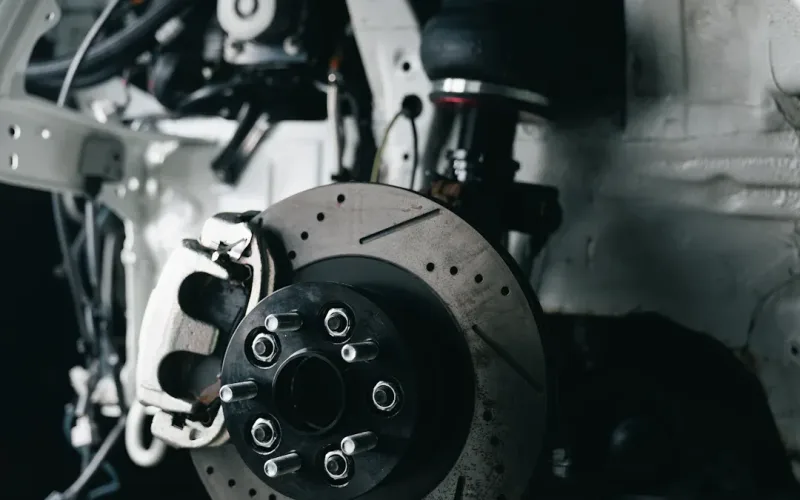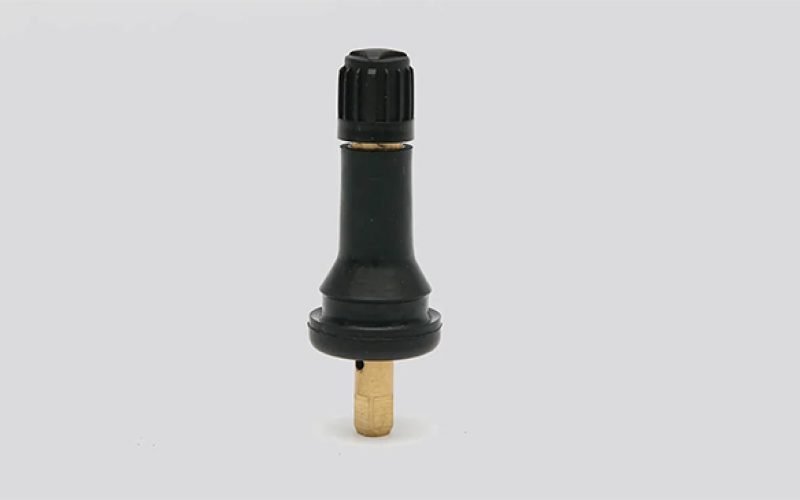

admin1
September 8, 2025
What Is a Tire Core Valve and Why Does Your Vehicle Need It
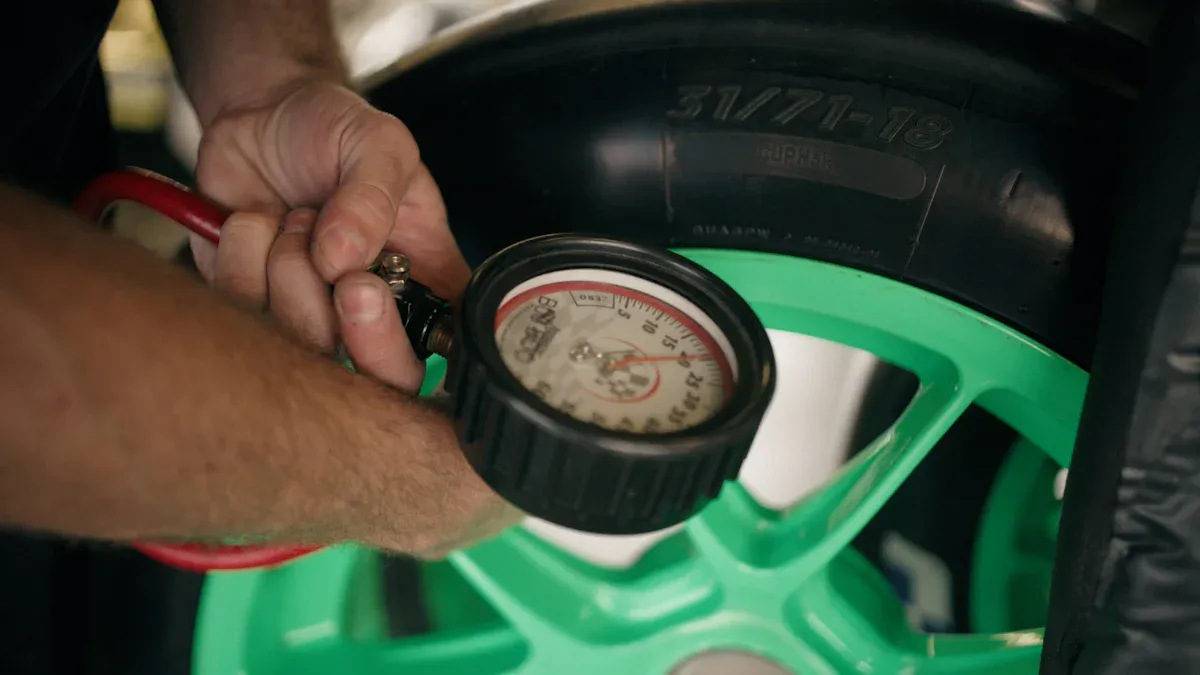
A tire core valve sits inside the tire valve stem. This small, spring-loaded part controls air flow in and out of your tire. You depend on the tire core valve to keep your tire pressure at the right level. When the tire core valve works well, your vehicle stays safe and performs better. Reliable tire core valves help prevent air loss and leaks. Take a look at the table below to see how tire core valve reliability affects safety and performance:
| Feature | Impact on Vehicle Safety and Performance |
|---|---|
| Accurate Tire Pressure | Boosts fuel efficiency and ride comfort |
| Durable Tire Core Valve | Reduces risk of tire failure for all drivers |
You need a dependable tire core valve in every wheel to drive safely.
Tire Core Valve and Tire Valve Stem Explained
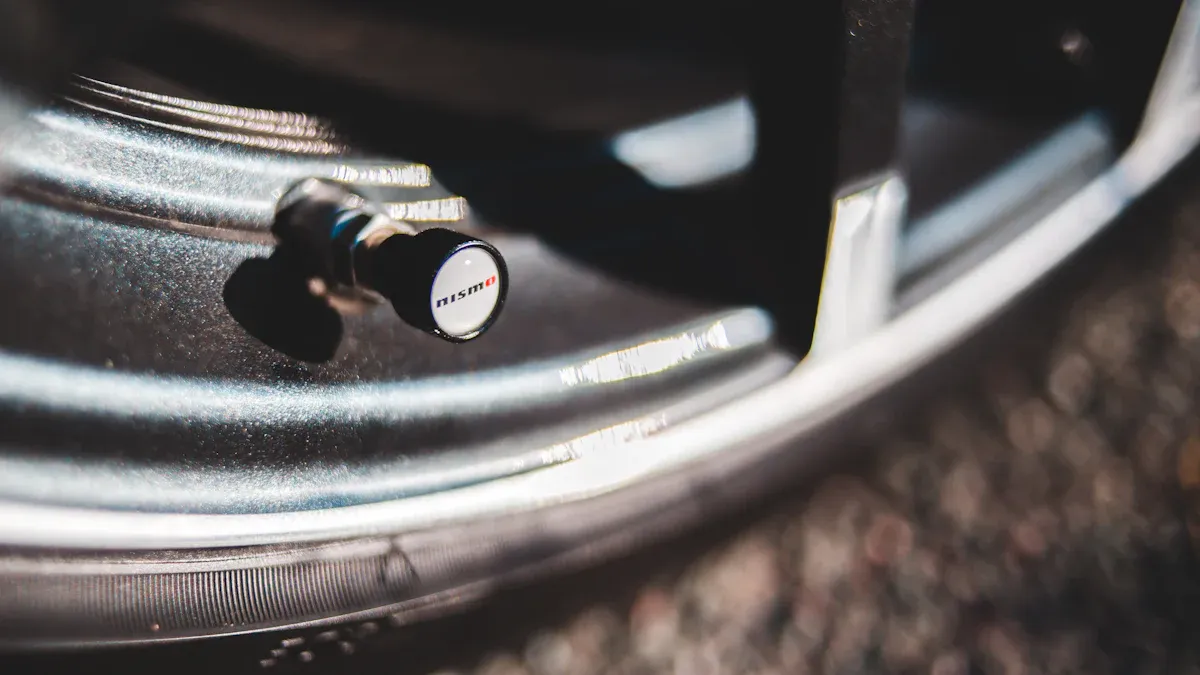
Structure and Location of the Valve Core
You can find the valve core inside the tire valve stem. This small metal part sits at the center of the valve stem and plays a key role in keeping your tire inflated. The valve core uses a spring-loaded pin and a seal. These features work together to stop air from leaking out when your tire is not in use. When you press the pin, the valve core opens and lets air in or out. The design helps you control air pressure and keeps your tire safe.
Tip: The central placement of the valve core inside the tire valve stem is important. It acts as the main sealing mechanism, so your tire stays properly inflated.
Here is a table showing the materials used for both the tire valve stem and the valve core:
| Component | Material | Properties |
|---|---|---|
| Tire Valve Stem | EPDM Rubber | Ozone resistant, longer lifespan, resistant to oxidation and environmental elements |
| Tire Valve Core | Nickel-Plated Brass | High-temperature rated, durable |
The tire valve stem and valve core use strong materials. EPDM rubber resists ozone and lasts longer. Nickel-plated brass handles high temperatures and stays durable.
How the Tire Valve Stem Houses the Valve Core
The tire valve stem has a special design that keeps the valve core secure. You will notice a two-piece construction in most valve stems. The upper part, called the valve core housing, threads into the base. This tight fit makes sure the valve core stays in place and does not move. You can access the valve core easily for maintenance or replacement.
- The tire valve stem allows for inflation and deflation of your tire.
- The valve stem includes the valve core, cap, and body.
- The valve core sits at the center and seals the air inside.
- The design of the valve stem lets you reach the valve core when you need to check or replace it.
You depend on the tire valve stem and valve core to keep your tires working well. The secure housing and strong materials help prevent air loss and make maintenance simple.
The Role of the Valve Core in Tire Pressure
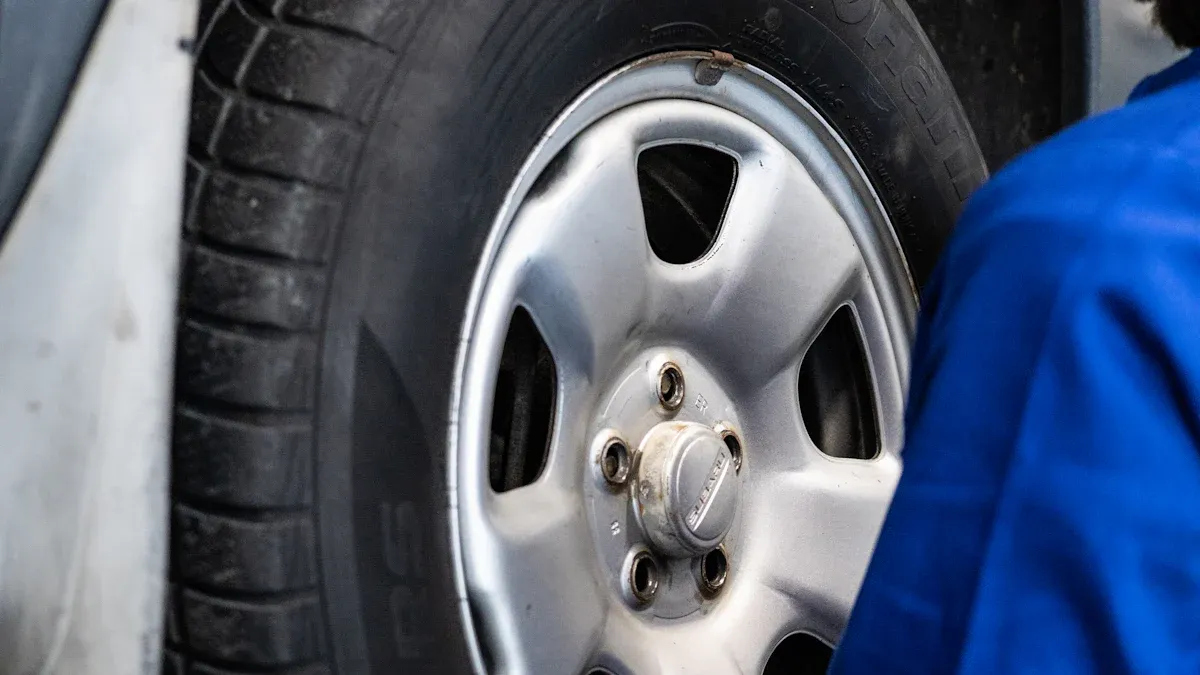
Maintaining Proper Tire Pressure
You need to keep your tires at the right pressure for safe driving. The valve core plays a big part in this process. It sits inside the valve stem and uses a spring-loaded pin. This pin moves when you add or release air. When temperatures change, the air inside your tire expands or contracts. The valve core adjusts to these changes. It lets air in during tire inflation and holds it steady when you finish. This action helps you keep the correct tire inflation pressure, even when the weather changes.
Most passenger vehicles have a recommended tire pressure. You can find this number on a label inside your car. Always check your tire pressure when the tires are cold. This gives you the most accurate reading. If you use the right valve core and valve stem, you help your tires last longer and perform better.
- The recommended tire pressure depends on your car and tire type.
- Check the pressure when tires are cold for the best results.
- Look for the manufacturer’s label inside your vehicle for the correct number.
Note: Keeping proper tire pressure helps your car use less fuel and gives you a smoother ride.
Preventing Air Loss and Leaks
The valve core does more than just let air in. It also stops air from leaking out. The spring-loaded pin and seal work together to keep air inside your tire. If the valve core fails, you might lose tire air pressure. This can make your tires wear out faster or even cause a flat.
- The valve core is key for holding tire inflation pressure.
- A good valve core prevents air leaks and keeps your tires safe.
- Using the right valve stem helps your tires last longer.
You should check your valve core if you notice your tire air pressure dropping often. A strong, well-made valve core protects your tires and keeps you safe on the road.
Why the Tire Core Valve Is Essential for Safety and Performance
Impact on Vehicle Safety
You rely on your tire core valve to keep your tires safe every time you drive. The valve core helps maintain the correct tire pressure, which is vital for your safety. When the valve core works well, your tires stay properly inflated. If the valve core fails, air can slowly leak out. This slow air loss leads to underinflated tires. Underinflated tires can overheat more easily, which increases the risk of a blowout. A blowout can cause you to lose control of your vehicle.
- The valve stem and core keep tire pressure steady.
- A faulty valve core causes slow air loss and underinflation.
- Underinflated tires are more likely to overheat and blow out.
You should check your tire pressure often. If you notice a drop in pressure, inspect the valve core for damage. Keeping your valve core in good condition helps prevent dangerous situations on the road.
Effects on Fuel Efficiency and Tire Lifespan
Your tire core valve does more than keep you safe. It also helps your vehicle use fuel efficiently and extends the life of your tires. When your tires have the right pressure, they roll smoothly. If the valve core leaks, even a small amount, your tires lose pressure over time. This gradual loss makes your tires underinflated. Underinflated tires increase rolling resistance, which means your engine must work harder. You use more fuel and spend more money at the pump.
- Valve caps and valve cores prevent air leaks, keeping tire pressure steady.
- Minor leaks cause gradual pressure loss and reduce tire performance.
- Underinflated tires increase rolling resistance and lower fuel efficiency.
- A faulty valve stem leads to pressure loss, affecting handling and braking.
- The engine works harder with underinflated tires, reducing fuel economy.
A good valve core helps your tires last longer. Proper tire pressure keeps your tires from wearing out too quickly. Regular maintenance of the valve core lets you spot problems early. You can fix issues before they damage your tires.
- A working valve core keeps tire pressure at the right level for tire longevity.
- It prevents air leaks, so tires stay inflated for better handling and fuel efficiency.
- Regular valve core checks help you find problems early and extend tire life.
You save money and drive safer when you keep your valve core in top shape.
Importance for Tire Pressure Monitoring Systems
Modern vehicles use tire pressure monitoring systems to help you stay safe. These systems check your tire pressure and alert you if it drops too low. The valve core plays a key role in these systems. If your valve core leaks or fails, the tire pressure monitoring system will warn you. You can then fix the problem before it gets worse.
Tire pressure monitoring systems depend on accurate readings. A good valve core keeps tire pressure steady, so the system works correctly. If the valve core is damaged, the system may give false alerts or miss a real problem. You should always make sure your valve core is working well to get the most from your tire pressure monitoring system.
Tip: Check your tire pressure monitoring systems regularly. If you see a warning light, inspect your valve core for leaks or damage.
A reliable valve core helps your tire pressure monitoring systems protect you and your vehicle. You get accurate alerts and can respond quickly to changes in tire pressure.
How the Valve Core Works
Spring-Loaded Pin Mechanism
You can find a spring-loaded pin inside every valve core. This small part controls how air moves in and out of your tire. When you press the pin, it opens the valve and lets air flow. During tire air inflation, the pin moves down, and pressurized air enters the tire. When you stop pressing, the spring pushes the pin back up. This action closes the valve and stops air from escaping. The spring-loaded pin works quickly and keeps your tire pressure steady.
Here is a table that shows how the spring-loaded pin works during different actions:
| Function | Description |
|---|---|
| Inflation | The spring-loaded pin allows pressurized air to pass when inflating a tire. |
| Deflation | Air escapes when the pin is depressed, unseating the seal. |
You depend on this simple mechanism every time you check or adjust your tire pressure.
Sealing Action During Inflation and Deflation
The valve core does more than just open and close. It also creates a tight seal that keeps air inside your tire. The pin connects to a small rubber seal. When you finish inflating your tire, the spring pushes the pin up, and the seal presses against the valve opening. This action locks in the air and keeps your tire pressure at the right level.
- The spring-loaded pin is movable and attached to a seal.
- During inflation, the pin allows air to enter the tire.
- During deflation, pressing the pin releases air by unseating the seal.
You can trust the valve core to keep your tires safe. If the seal wears out or the pin gets stuck, you might lose tire pressure. Always check your valve core if you notice your tires losing air. A working valve core helps you maintain the correct tire pressure and supports safe driving.
Valve Core Issues, Maintenance, and Fortune’s Quality Commitment
Signs of Valve Core Problems
You can spot valve core problems by watching for certain signs. Automotive technicians often report these issues when tire valves start to fail:
- Blue exhaust smoke coming from your vehicle
- Loss of engine power
- Popping or ticking noises while the engine runs
- Excessive oil consumption
- Rough idling
- Oil leaks on the outside of the engine
These symptoms show that your tire valves or related parts may not be working as they should. If you notice any of these signs, you should check your tire valves and valve stem caps right away. Regular checks help you catch problems early and keep your vehicle safe.
Consequences of Valve Core Failure
Valve core failure can lead to serious problems for your vehicle. The table below shows what can happen if you ignore issues with your tire valves:
| Cause | Consequence |
|---|---|
| Valve clearance set too tight or missed maintenance | Valve does not close, causing overheating and possible failure |
| Spring not inserted correctly during installation | Fracture of the valve stem face and damage to the valve guide |
| Non-centric remachining of the valve seat or guide | Valve fails to close, leading to overheating and possible burns or fractures |
| Valve guide clearance too large from wear | Stiff valve operation and overheating, causing burns or shot channels |
| Guide diameter too small during replacement | Inadequate lubrication and stiffness, leading to overheating of the valve head or seat area |
If you let these problems go, you risk tire failure, poor performance, and even dangerous driving conditions. You should always use high-quality tire valves and perform routine valve stem inspection to avoid these issues.
Maintenance Tips and Replacement Steps
You can keep your tire valves in top shape by following a few simple steps. Regular maintenance helps you avoid costly repairs and keeps your vehicle running smoothly.
Maintenance Tips:
- Check your tire pressure and valve core condition often.
- Inspect valve stem caps and valve stem extenders for damage or wear.
- Keep spare valve cores and a valve core remover tool in your toolbox.
- Prepare your workspace and gather your tools, including a valve core remover and replacement valve core.
- Locate the valve stem and release the air from the tire.
- Remove the old valve core using the valve core tool.
- Inspect the old valve core for any damage or wear.
- Insert the new valve core and tighten it securely.
- Inflate the tire to the recommended pressure.
- Check for leaks using soapy water.
- Reattach the valve stem cap and perform final checks.
Tip: Monthly inspections of vulnerable parts like seat seals and packing box gaskets help you catch problems early. For high-pressure environments, check your tire valves every two weeks.
By following these steps, you extend the life of your tire valves and improve your vehicle’s safety. Fortune’s commitment to quality means you get reliable tire valves every time you choose our products.
Fortune’s Expertise in Tire Valve Manufacturing
When you choose tire valve cores, you want products that meet high standards. Fortune stands out in the industry because you get reliable quality and advanced technology. The company started in 1996 and has grown into a leading manufacturer of tire valves. You benefit from their experience and commitment to excellence.
Fortune uses strict quality control measures at every step. You see the difference in their products because they test tire valve cores in their own facilities. Engineers and technicians monitor each production process. They use advanced equipment to check for defects and ensure every valve core meets the required standards. You can trust that every product has passed multiple inspections before it reaches you.
Here are some ways Fortune maintains top quality for tire valve cores:
- In-house testing facilities check products at different stages.
- Advanced technologies support custom manufacturing for unique needs.
- Experienced engineers design and develop each product.
- Every production process gets monitored to maintain quality.
- Strict inspections cover each product, including packaging checks before shipment.
Tip: You can rely on Fortune’s tire valve cores because they go through several quality checks. This reduces the risk of air leaks and improves your vehicle’s safety.
You also benefit from Fortune’s focus on innovation. The company invests in new automation equipment to increase production capacity and improve technology. You get tire valve cores that perform well in different environments and last longer.
| Fortune’s Quality Commitment | What It Means for You |
|---|---|
| Stringent Quality Control | Reliable, safe tire valves |
| Advanced Testing Facilities | Fewer defects and failures |
| Experienced Engineers | Consistent product performance |
When you use Fortune’s tire valve cores, you protect your tires and improve your driving experience. You get products that meet international standards and deliver dependable results every time.
You depend on tire core valves to keep your tires safe and your vehicle running smoothly. Regular inspection and timely replacement help prevent air leaks and sudden flats.
Sudden loss of air pressure at highway speeds can be dangerous and may cause accidents.
| Key Takeaway | Description |
|---|---|
| Tire Pressure Maintenance | Valve cores keep tire pressure accurate for safety and performance. |
| Fuel Efficiency | Proper pressure helps you save fuel. |
| Regulatory Compliance | High-quality valve cores meet strict safety standards. |
Choose Fortune for reliable tire valve products. You get tested quality and expert support every time.
FAQ
What does a tire core valve do?
You control air flow in your tire with the tire core valve. This small part lets you add or release air. It seals the tire to keep air inside. You depend on it for safe driving.
How often should you check your tire core valve?
You should inspect your tire core valve every month. Look for leaks or damage. Use soapy water to spot bubbles. Regular checks help you catch problems early and keep your tires safe.
Can you replace a tire core valve yourself?
You can replace a tire core valve with a valve core remover tool. Remove the old valve core, insert a new one, and inflate the tire. Always check for leaks after replacement.
What happens if your valve core fails?
If your valve core fails, your tire loses air. You may notice low pressure, poor handling, or faster tire wear. You risk a flat tire or blowout. Replace faulty valve cores right away.
Why choose Fortune tire valve cores?
You get reliable quality with Fortune tire valve cores. Fortune tests every product and uses strong materials. You benefit from advanced technology and strict inspections. Choose Fortune for safe, long-lasting tire valves.


